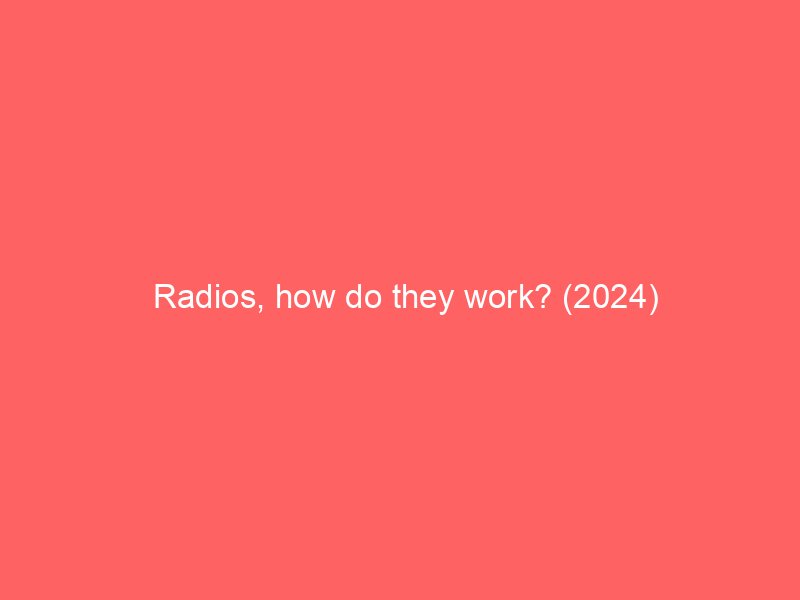Your cart is currently empty!

In today’s article, I’m hoping to provide an introduction to radio that’s free of ham jargon and advanced math. To do so, I’m leaning on the concepts discussed in three earlier articles on this blog:
Electric fields can be visualized by plotting the paths of hypothetical positively-charged particles placed in the vicinity. For our ex-capacitor, we’d be seeing arc-shaped lines that connect the plates — and strictly speaking, extend on both sides all the way to infinity.
An unchanging electric field isn’t very useful: if it’s just sitting there for all eternity, it doesn’t convey information nor perform meaningful work. If we push a charge against the direction of the field and then let it loose, the particle will fly away – but that’s just a matter of getting back the energy we expended on pushing it into position in the first place.
The situation changes if we start moving charges back and forth between the plates. This produces an interesting effect: a ripple-like pattern of alternating fields that are getting away from the ex-capacitor at the speed of light:
The color corresponds to the direction of the field – i.e., the pull that a charged particle would experience if placed in the vicinity: green stands for a “downward” field where the upper half of the antenna is positive and the lower half is negative; yellow is the other way round.
It should be fairly evident that the amount of radiated energy increases with the amount of charges shuttled back and forth between the plates — the intensity of each ripple — and with the number of transitions per second (i.e., with the signal’s frequency).
A perfectly uniform waveform is still not useful for communications, but we can encode information by slightly altering the wave’s characteristics over time — for example, tweaking its amplitude. And if we do it this way, then owing to a clever trick we’ll discuss a bit later, simultaneous transmissions on different frequencies can be told apart on the receiving end.
Each reflection is basically just the previous quarter-wave “folded back” onto each rod. (If you’re iffy on signal reflections, I recommend reviewing this article.)
The following animation shows the pattern of superimposed signal and reflections within a single rod. The actual span of the rod is marked by vertical lines. The light blue line is the reflection, which is mirrored back onto the rod. The orange line corresponds to the summed voltage:
The following animation shows both elements of a dipole antenna in action, this time with some modest reflection losses baked in,:
All dipoles made for odd multiples of half-wavelength (3/2 λ, 5/2 λ, …) exhibit this resonant behavior. Similar resonance is also present at even multiples (1 λ, 2 λ, …), but the standing wave ends up sitting in the wrong spot — constantly getting in the way of driving the antenna rather than aiding the task.
Other antenna lengths are not perfectly resonant, although they might be close enough. An antenna that’s way too short to resonate properly can be improved with an in-line inductor, which adds some current lag. You might have seen antennas with spring-like sections at the base; the practice called electrical lengthening. It doesn’t make a stubby antenna perform as well as a the real deal, but it helps keep the input impedance in check.
Now that we’re have a general grasp of half-wave dipoles, let’s have a look at the animation of actual electric field around a half-wave antenna:
Note the two dead zones along the axis of the antenna; this is due to destructive interference of the electric fields in this axis.
Next, let’s consider what would happen if we placed an identical receiving antenna some distance away from the transmitter. Have a look at receiver A on the right:
It’s easy to see that the red dipole is “swimming” through a coherent pattern alternating electric fields: the blue region is pulling electrons toward the upper plate, and yellow pushing them down. The antenna experiences back-and-forth currents between its poles at the transmitter’s working frequency. Further, if the antenna’s length is chosen right, there should be constructive interference of the induced currents too, eventually resulting in much higher signal amplitudes.
The illustration also offers an intuitive explanation of something I didn’t mention before: that dipoles longer than ½ wavelength are more directional. If you look at receiver B on the left, it’s clear that even a minor tilt of a long dipole results in the ends being exposed to opposing electric fields, yielding little or no net current flow.
Not all antennas are dipoles, but most operate in a similar way. Monopoles are just a minor riff on the theme, trading one half of the antenna for a connection to the ground. More complex shapes usually crop up as a way to maintain resonance at multiple frequencies or to fine-tune directionality. You might also bump into antenna arrays; these devices exploit patterns of constructive and destructive interference between digitally-controlled signals to flexibly focus on a particular spot.
Compared to antenna design, signal modulation is a piece of cake. There’s amplitude modulation (AM), which changes the carrier’s amplitude to encode information; there’s frequency modulation (FM), which shifts the carrier up and down; and there’s phase modulation (PM) — well, you get the drift. We also have quadrature amplitude modulation (QAM), which robustly conveys information via the relative amplitude of two signals with phases offset by 90°.
In any case, once the carrier signal is isolated, demodulation is typically pretty easy to figure out. For AM, the process can be as simple as rectifying the amplified sine wave with a diode, and then running it through a lowpass filter to obtain the audio-frequency envelope. Other modulations are a bit more involved — FM and PM benefit from phase-locked loops to detect shifts — but most of it isn’t rocket surgery.
The other point is that counterintuitively, all modulation is frequency modulation. Intuitively, AM might feel like a clever zero-bandwidth hack: after all, we’re just changing the amplitude of a fixed-frequency sine wave, so what’s stopping us from putting any number of AM transmissions a fraction of a hertz apart?
Well, no dice: recall from the discussion of the Fourier transform that any deviation from a steady sine introduces momentary artifacts in the frequency domain. The scale of the artifacts is proportional to the rate of change; AM is not special and takes up frequency bandwidth too. To illustrate, here’s a capture of a local AM station; we see audio modulation artifacts spanning multiple kHz on both sides of the carrier frequency:
We’ll have a proof of this in a moment. But broadly speaking, all types of modulation boil down to taking a low-frequency signal band — such as audio — and transposing it in one way or another to a similarly-sized slice of the spectrum in the vicinity of some chosen center frequency. The difference is the construction method, not the result.
The basic operation of almost every radio receiver boils down to mixing (multiplying) the amplified antenna signal with a sine wave of a chosen frequency. As foreshadowed just moments ago, this is eerily similar to how Fourier-adjacent transforms deconstruct complex signals into individual frequency components.
From the discussion of the discrete cosine transform (DCT) in the earlier article, you might remember that if a matching frequency is present in the input signal, the multiplication yields a waveform with a DC bias proportional to the magnitude of that frequency component. For all other input frequencies, the resulting waveforms average out to zero, if analyzed on a sufficiently long timescale.
In the aforementioned article, we informally noted that the resulting composite waveforms have shorter periods if the original frequencies are far apart, and longer periods if the frequencies are close. Now, a more precise mathematical model is in order. As it turns out, for scalar multiplication, the low-frequency cycle is always |f1 – f2|, superimposed on top of a (less interesting) high-frequency component f1 + f2:
This behavior might seem puzzling, but it arises organically from the properties of sine waves. At its root is the semi-well-known angle sum identity, given by the following formula:
It’s probably best to zoom in and just walk through the picture, but if you need additional hints, the following text narrative should help. Otherwise, just skip ahead to the paragraph starting with the “fast forward” pictogram (⏩).
Panel 3 (middle left): we add triangle #3, placing it on top of the other triangles. The new triangle inherits a hypotenuse of 1 from triangle #1, and has a combined angle of α+β as a consequence of being partly inscribed inside #1 and #2. It follows that its adjacent is 1 × cos(α + β).
The bottom edge of the combined figure has a length equal to the known adjacent of #2: cos(α) × cos(β). Alternatively, the length can be expressed as the adjacent of #3 – cos(α + β) – plus some unknown segment, x.
We solve for that mystery segment by looking a new helper triangle (#4). Panel 4 (middle right): we find the top angle of that triangle, which works out to β. Panel 5 (bottom): a quick analysis shows that x is equal to sin(α) × sin(β). Putting it all together, we obtain the following angle sum identity:
⏩ The identity for cos(α + β) can be trivially extended to cos(α – β), because subtraction is the same as adding a negative number:
Now that we have these two formulas, let’s see what happens if we subtract cos(α + β) from cos(α – β):
Next, divide both sides by two and flip the expression around; this nets us a formula that equates the product of (i.e., the mix of) two sine frequencies to the sum of two independent cosines running at |f1 – f2| and f1 + f2:
We don’t even need to believe in trigonometry. A closely-related phenomenon has been known to musicians for ages: when you simultaneously play two very similar tones, you end up with an unexpected, slowly-pulsating “beat frequency”. Here’s a demonstration of a 5 Hz beat produced by combining 400 Hz and 405 Hz:
Hello,
This is xdefiance

Welcome to the website, my cozy corner of the internet dedicated to all things homemade and found delightful to share with others online and off.
You can book with Jeffrey, Founder of xdefiance.com, by following this link here.
Visit the paid digital downloads products page to see what is all available for immediate purchase & download to your computer or cellphone by clicking this link here.
Find out more about xdefiance.com by reading the FAQ for answers to common questions. Read the Returns & Exchanges Shop Policy and if you have any questions, please contact during business hours:
Mon.-Fri. 9am-5pm, Sat. 10am-5pm Sun. Closed
You can reach someone directly at 419-318-9089 or send an email to shop@xdefiance.com for a response will be given usually within 24 hours of receiving it.
Let’s connect
Join the fun!
Stay updated with our latest tutorials and ideas by joining our newsletter.






Leave a Reply
You must be logged in to post a comment.